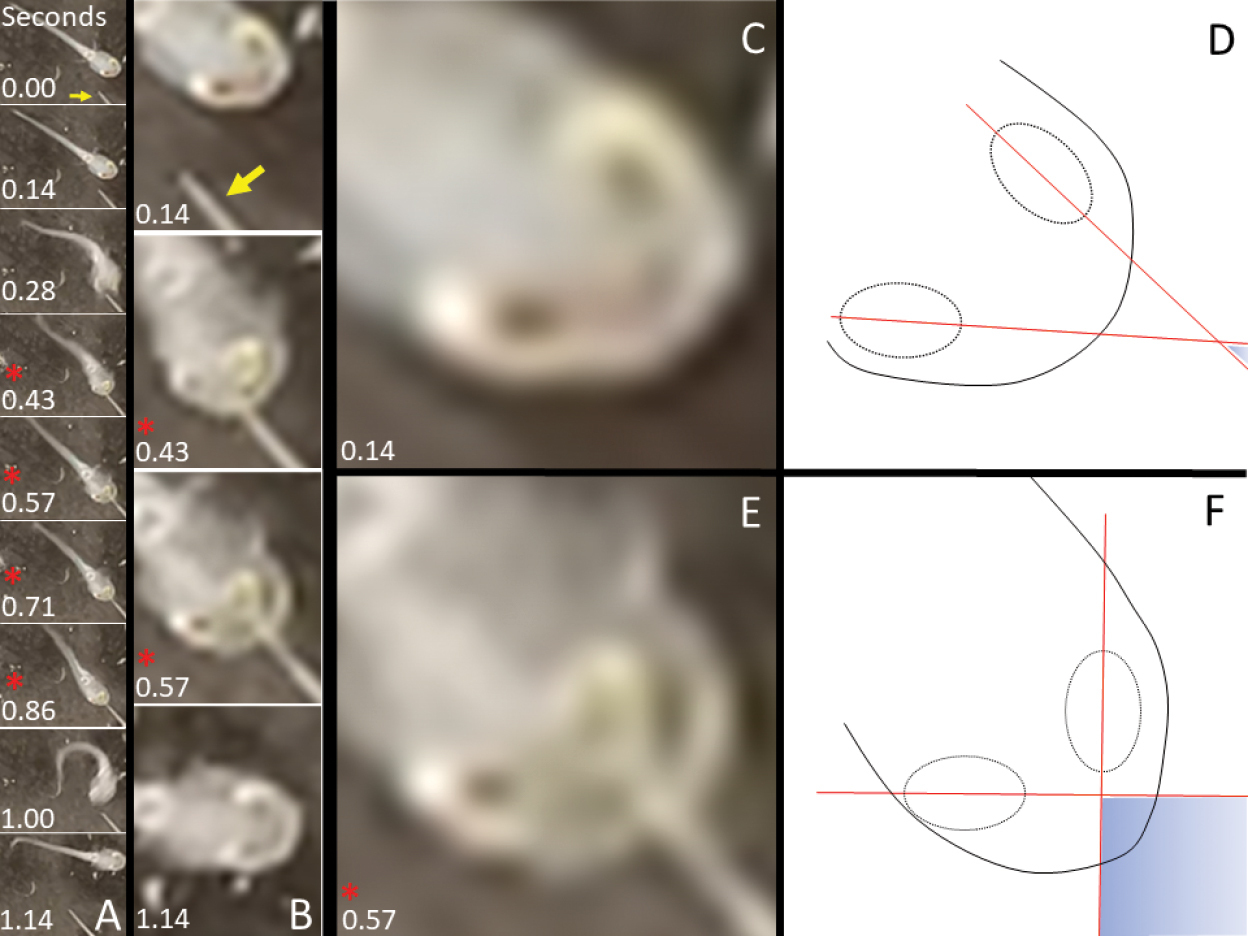
|
||
|
Eye vergence in surface fish stimulated by a vibrating (10 Hz) glass rod (A, B). Larval prey capture (LPC) behavior is characterized by a fast-striking motion toward the vibrating glass rod (yellow arrow) within tens of microseconds. Red asterisks highlight instances when the eyes converged. Higher magnification to highlight the changes in eye position during a strike (C–F). Freely swimming larvae have eyes pointing sub-perpendicular to their body in which the binocular overlap (blue) region of their visual space is minimal (C, D). During LPC, the mean eye vergence angle changes, largely expanding the binocular area of visual space (E, F). |